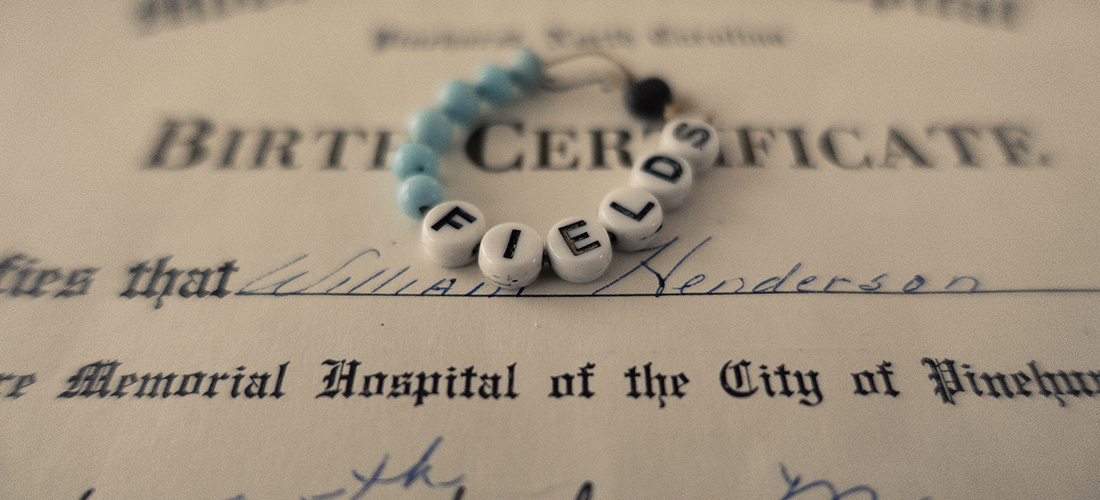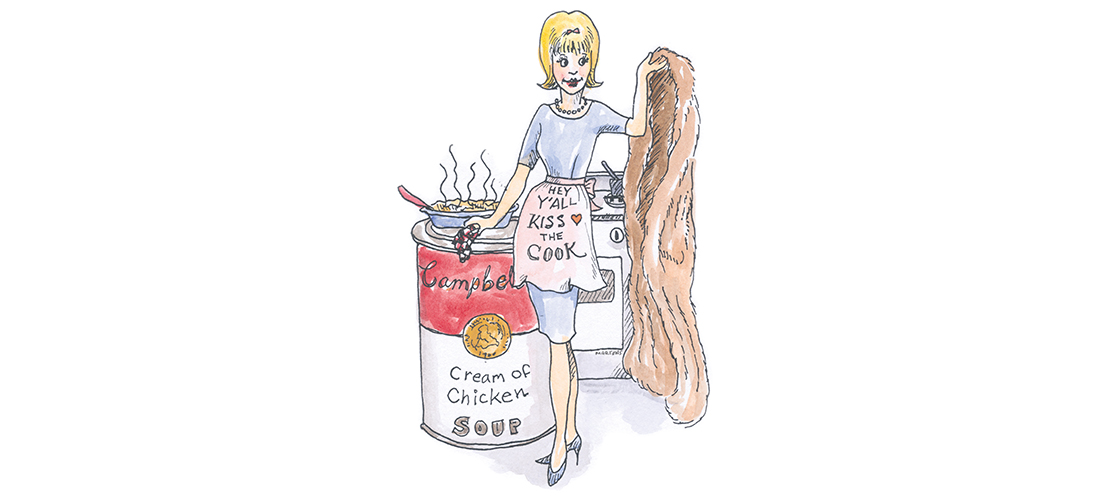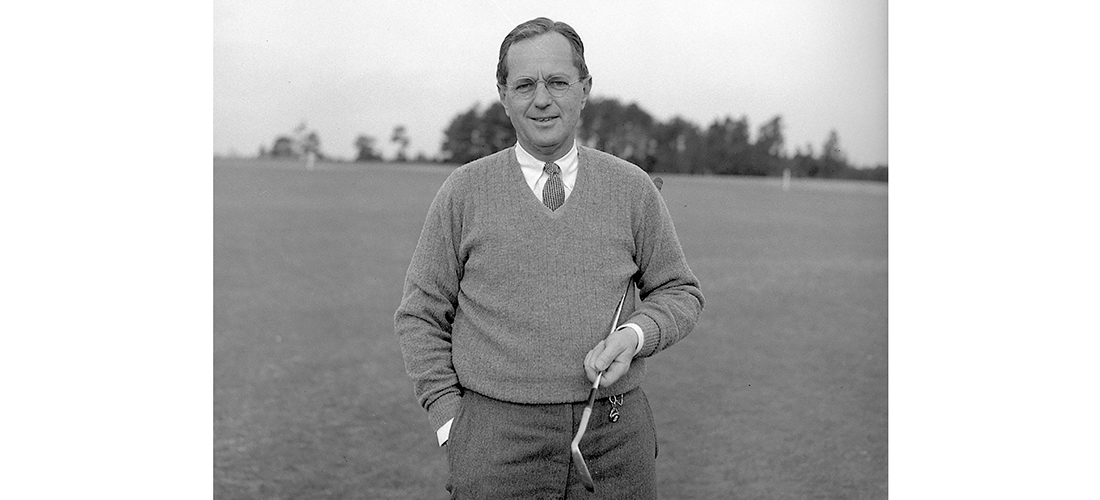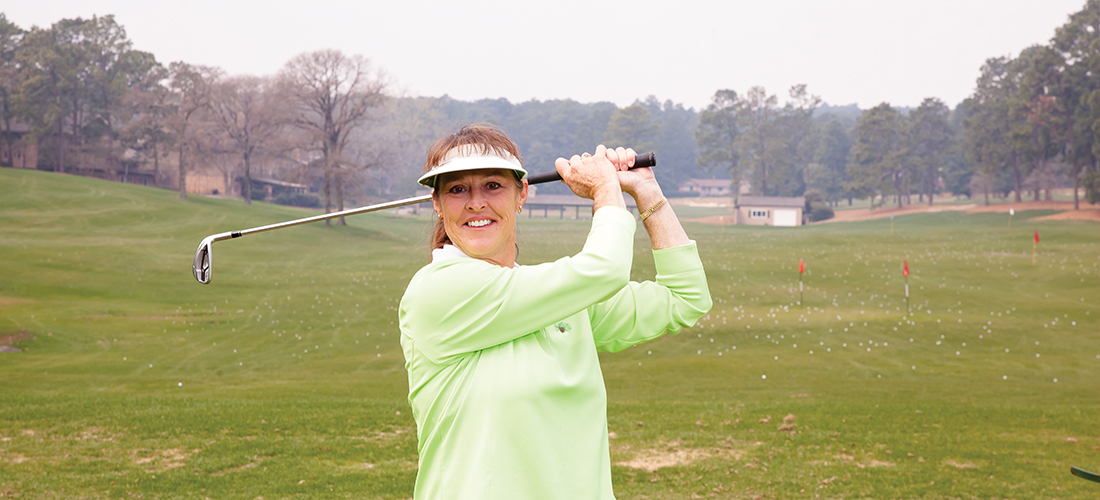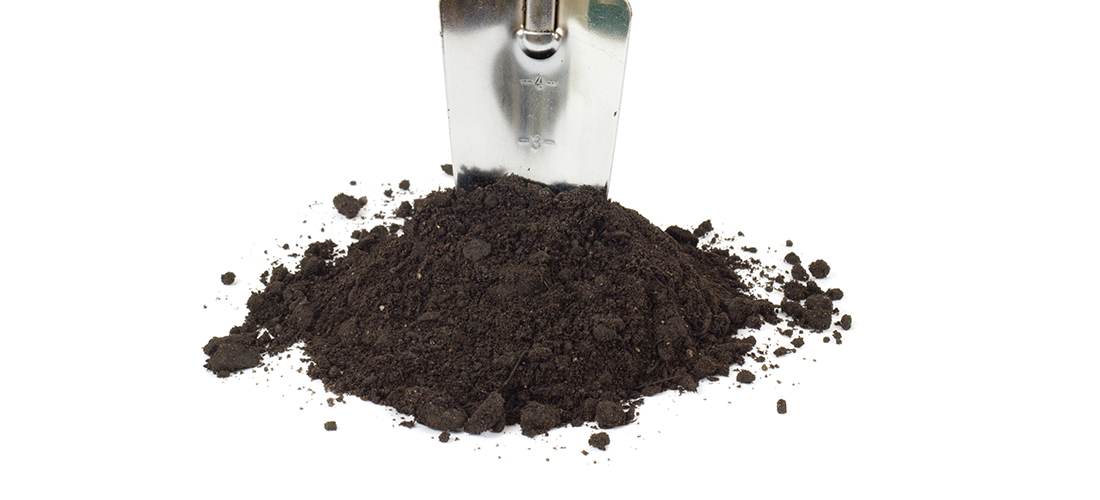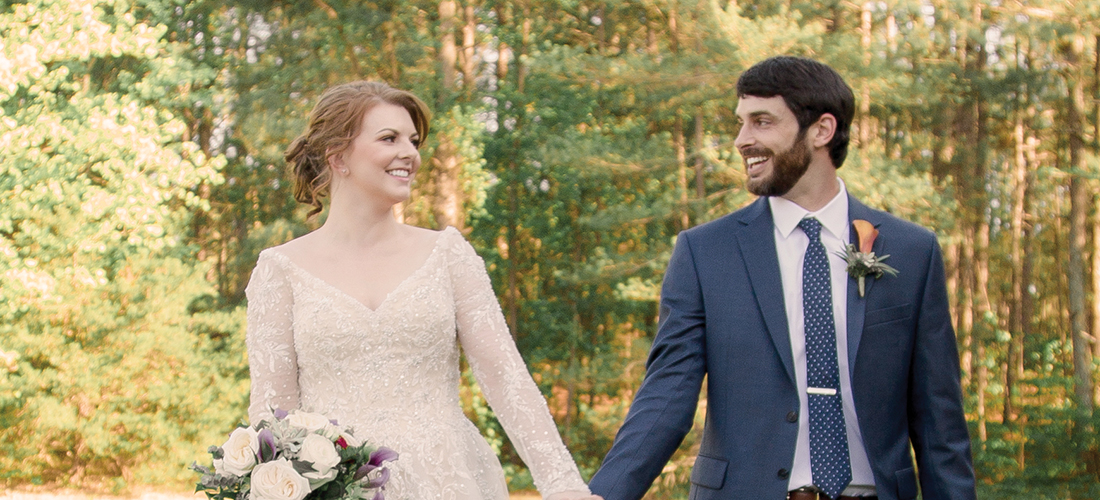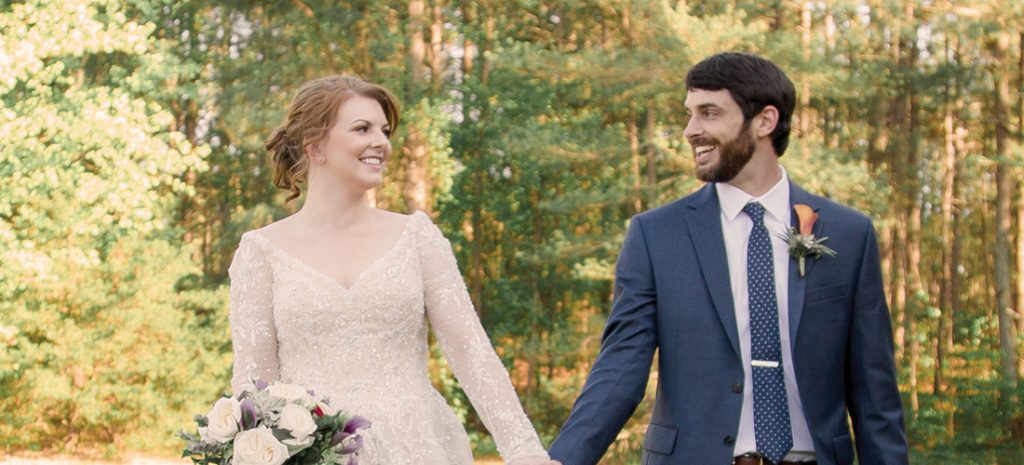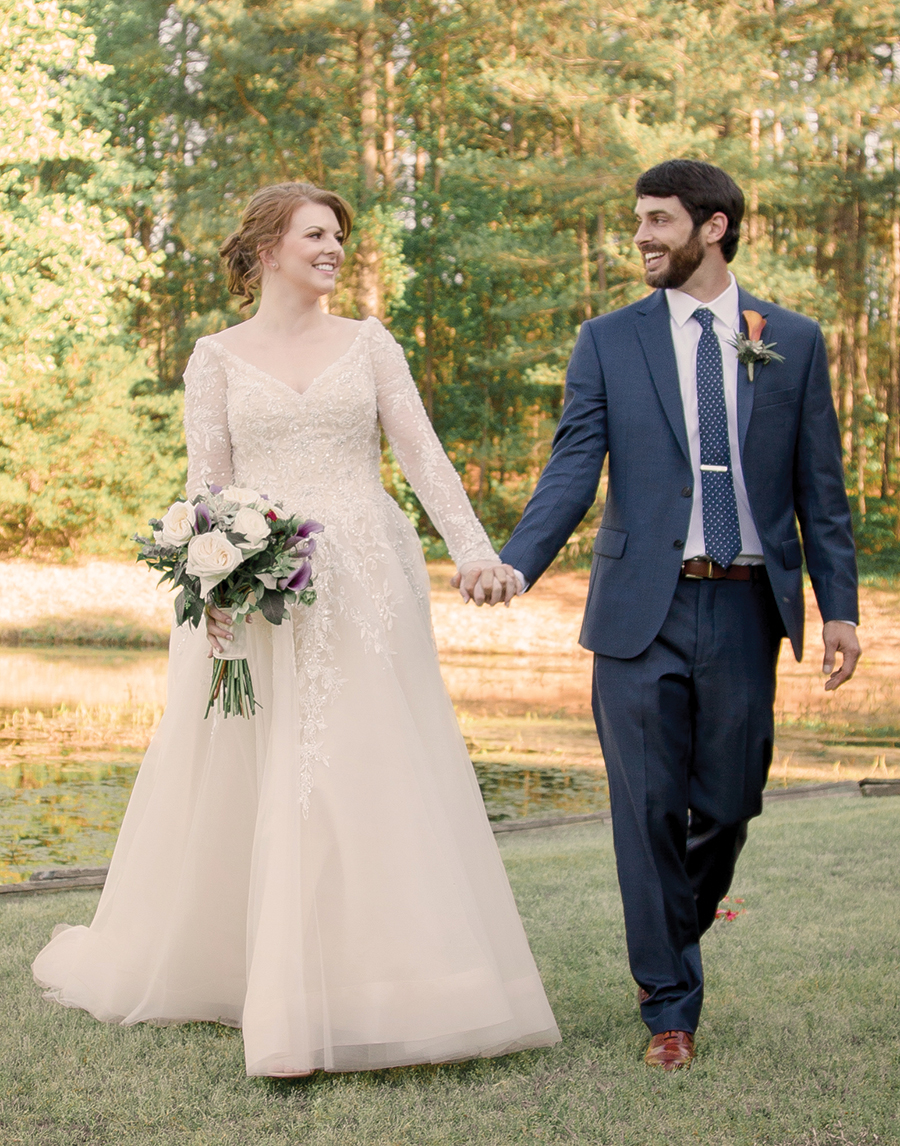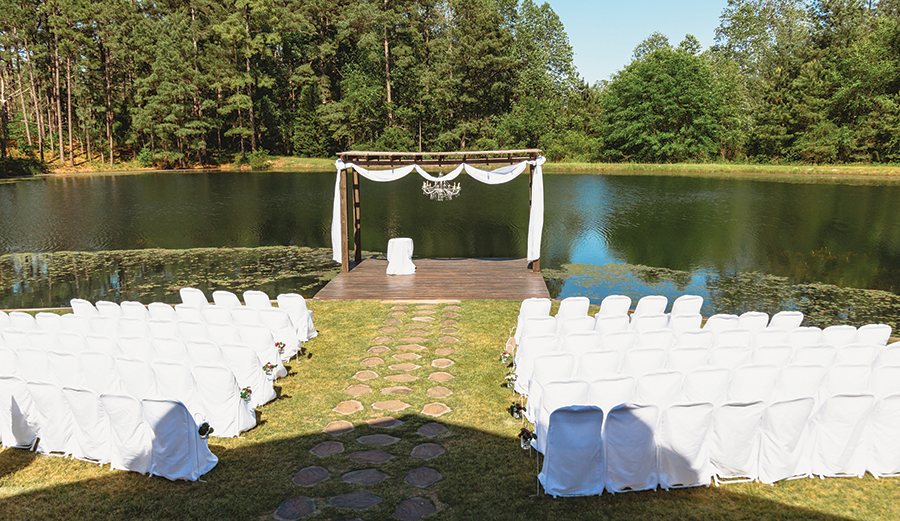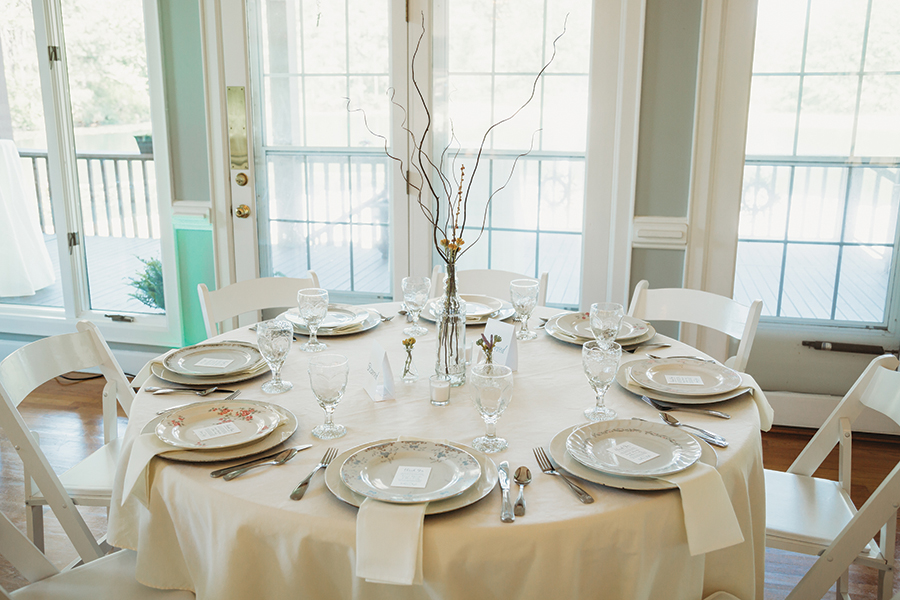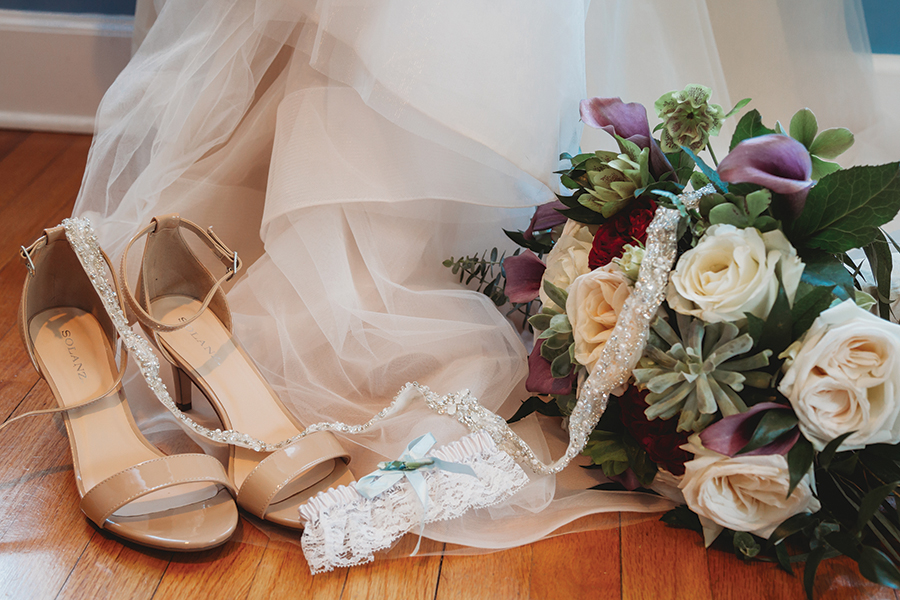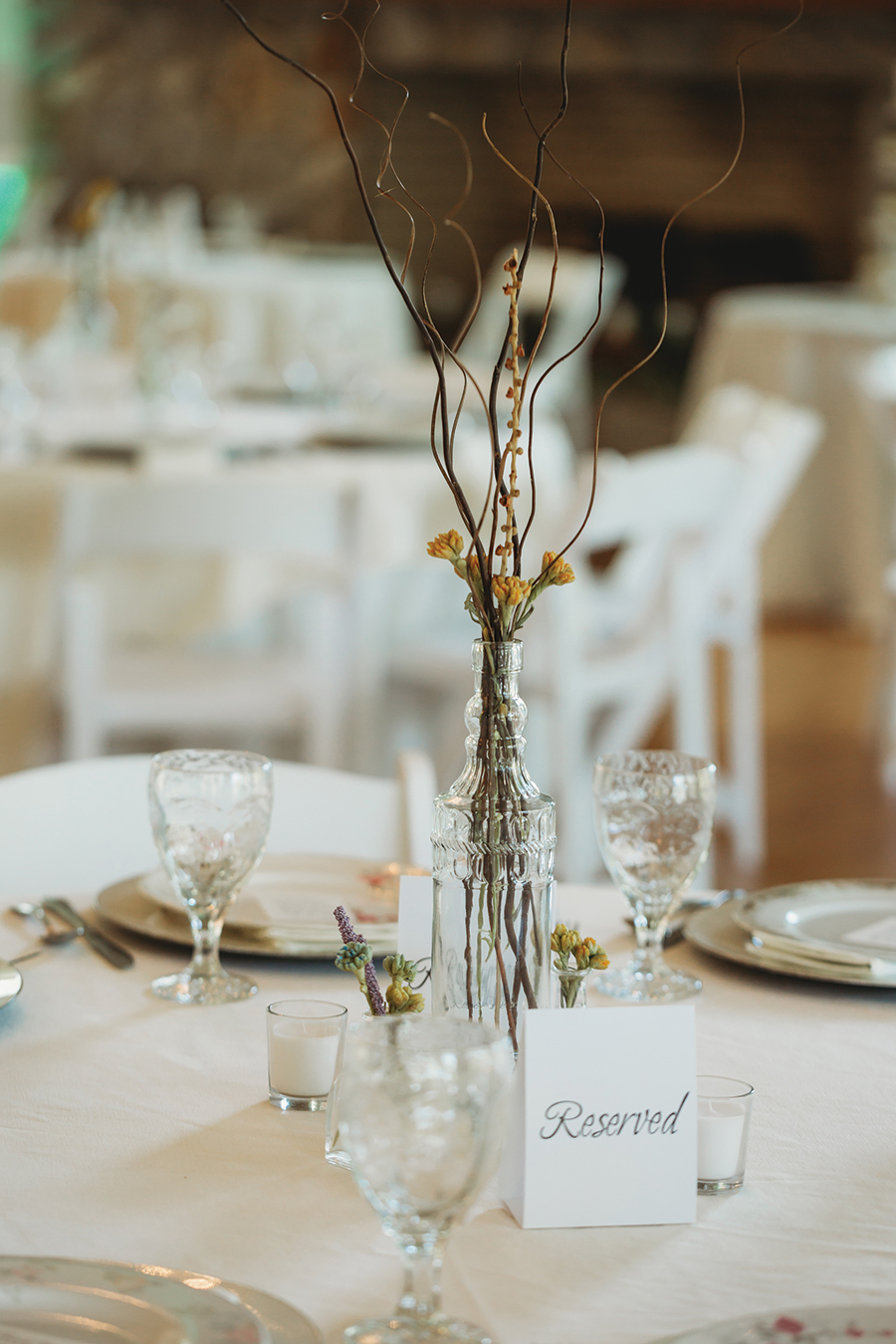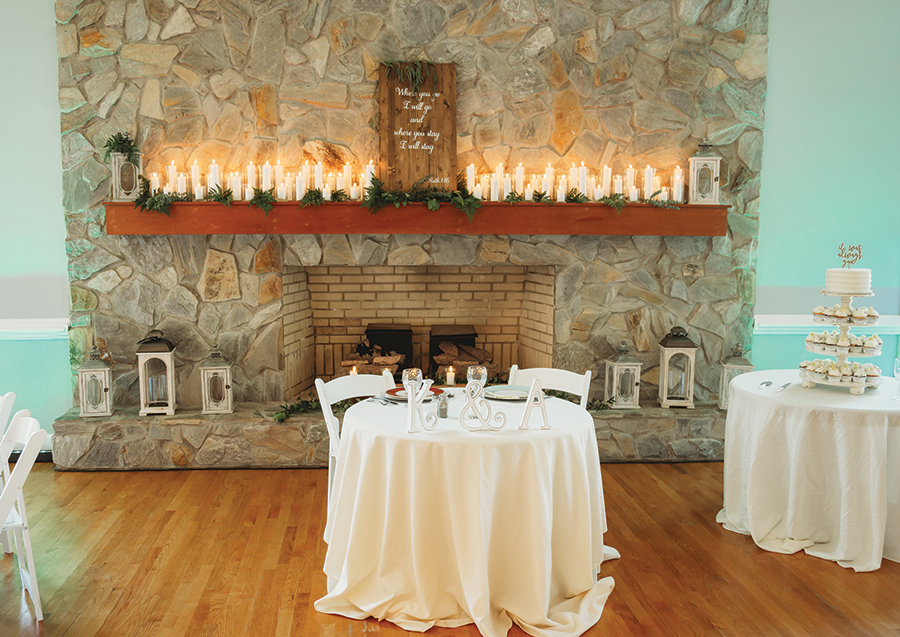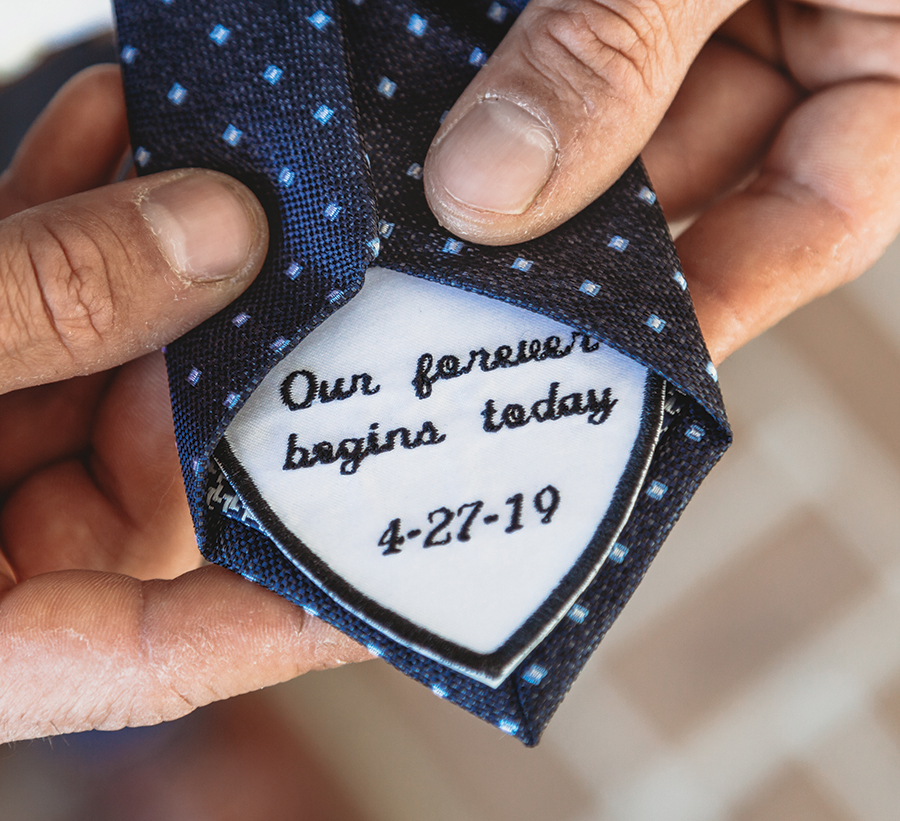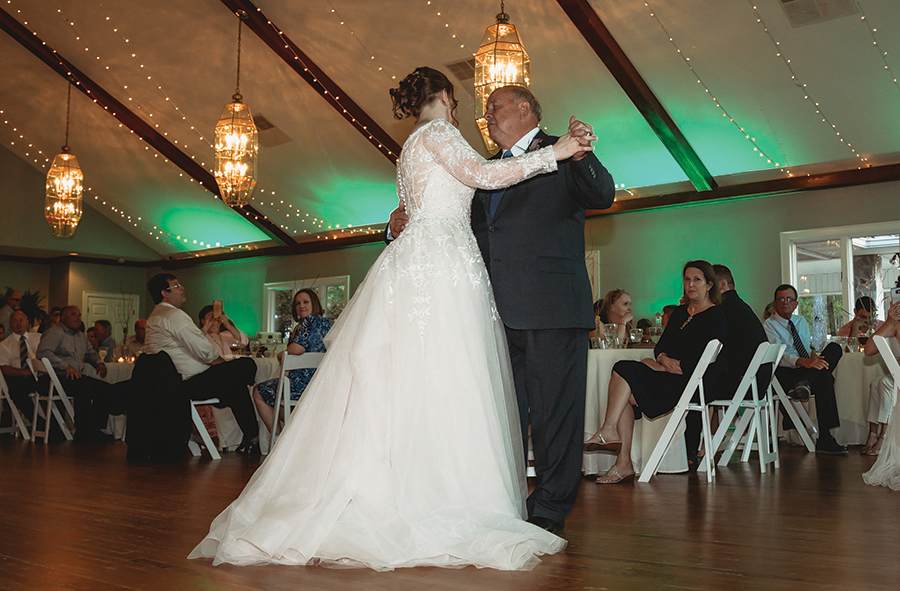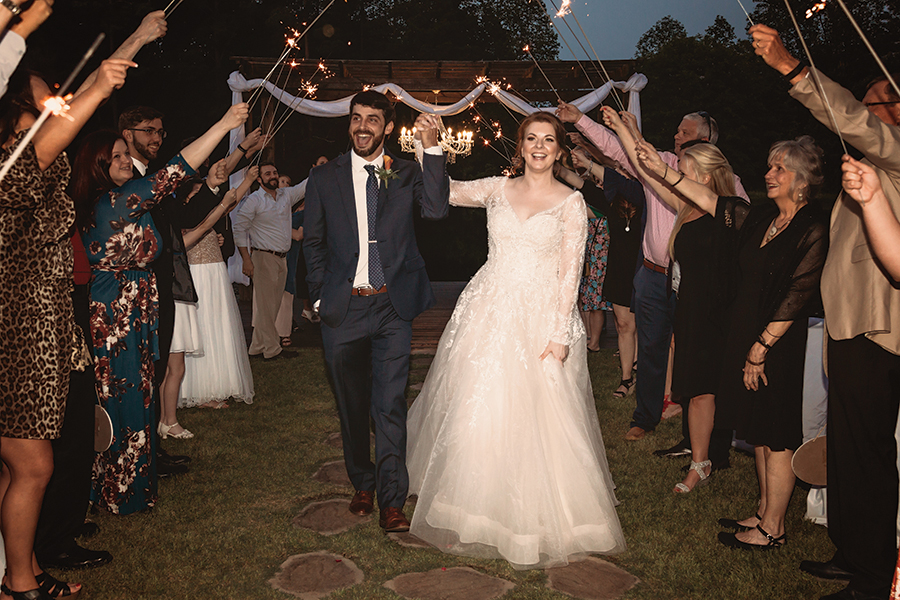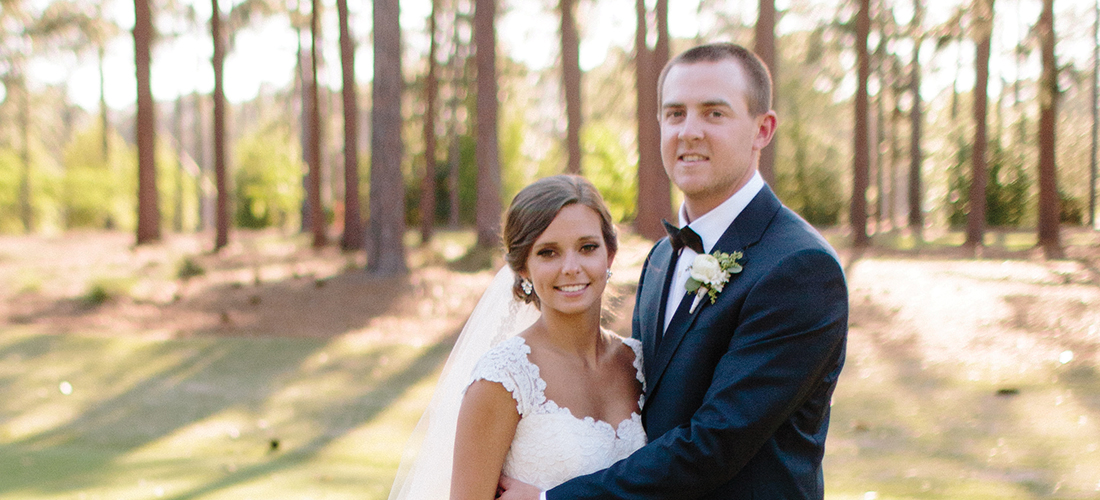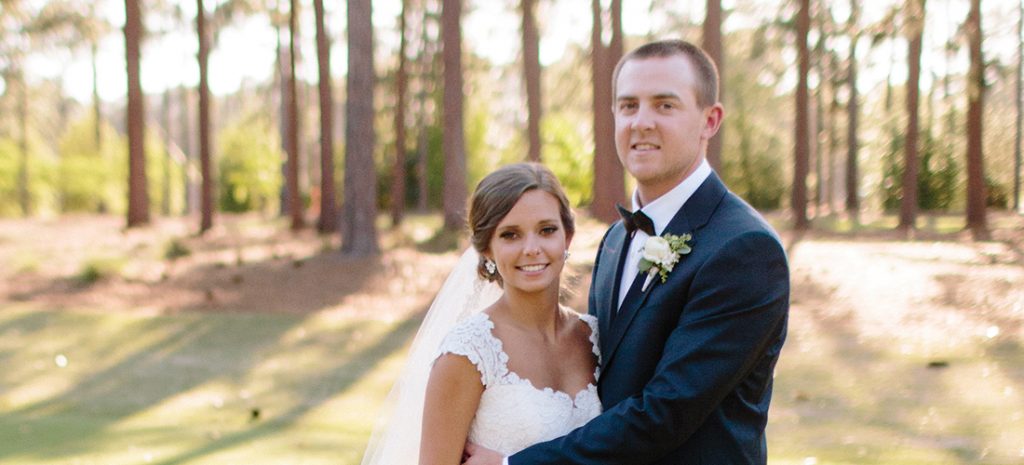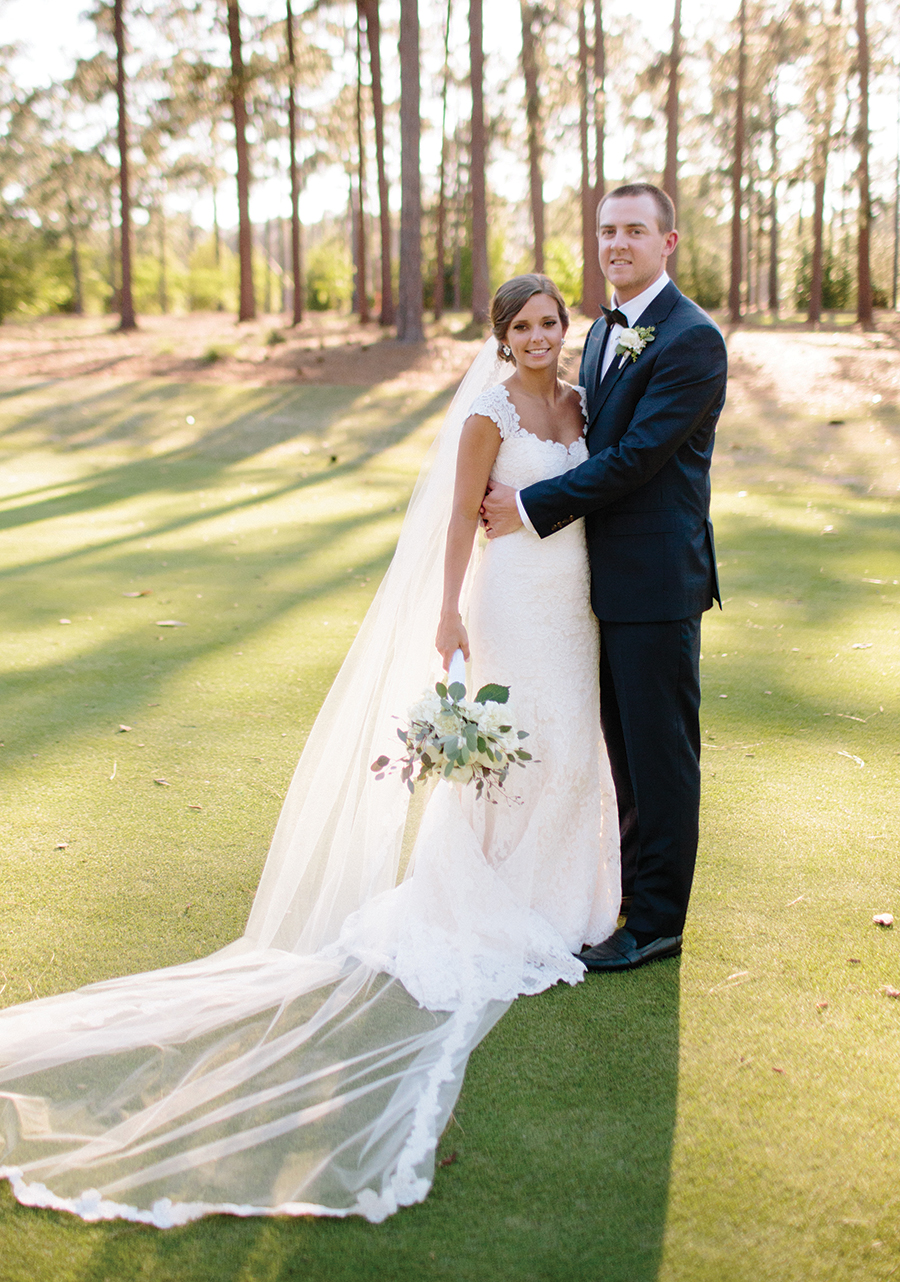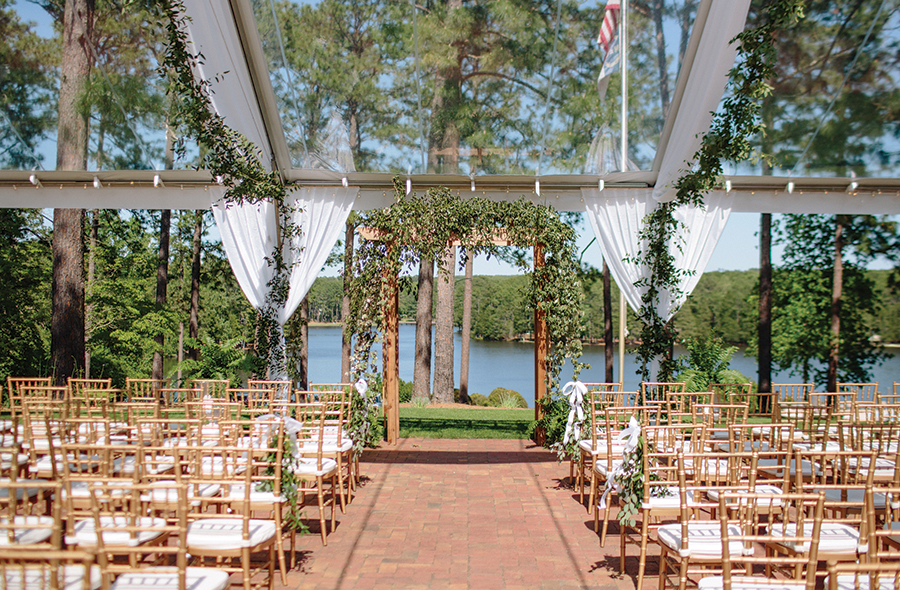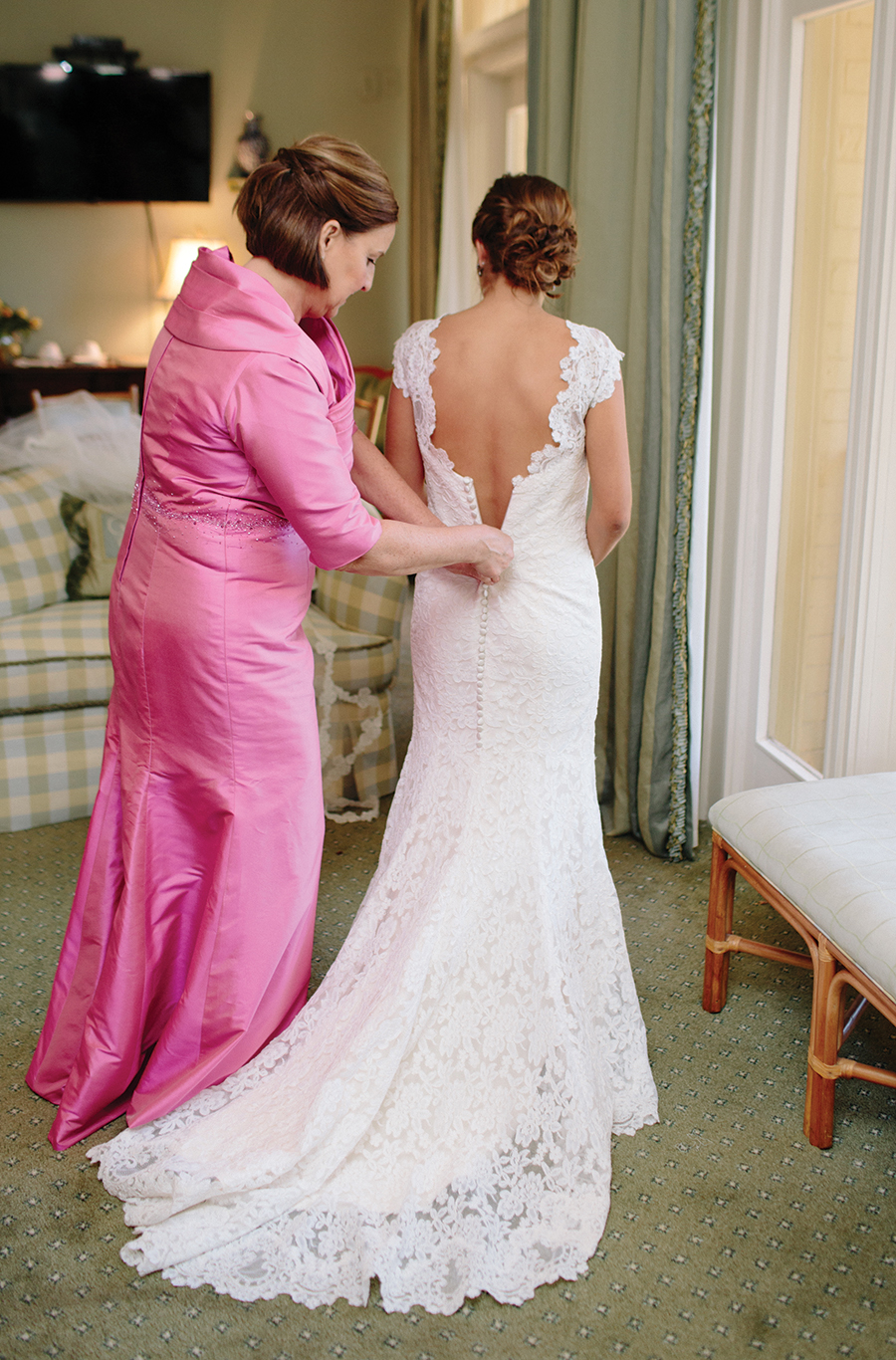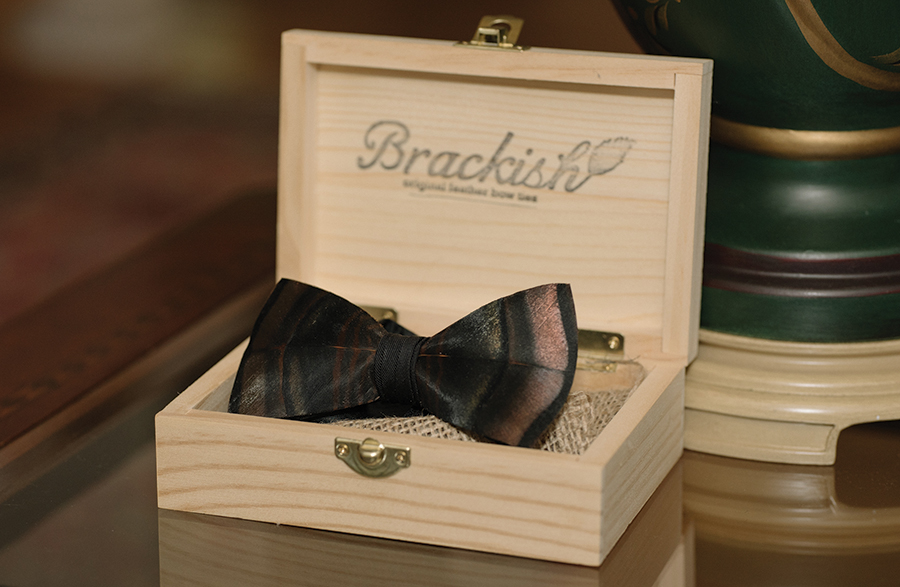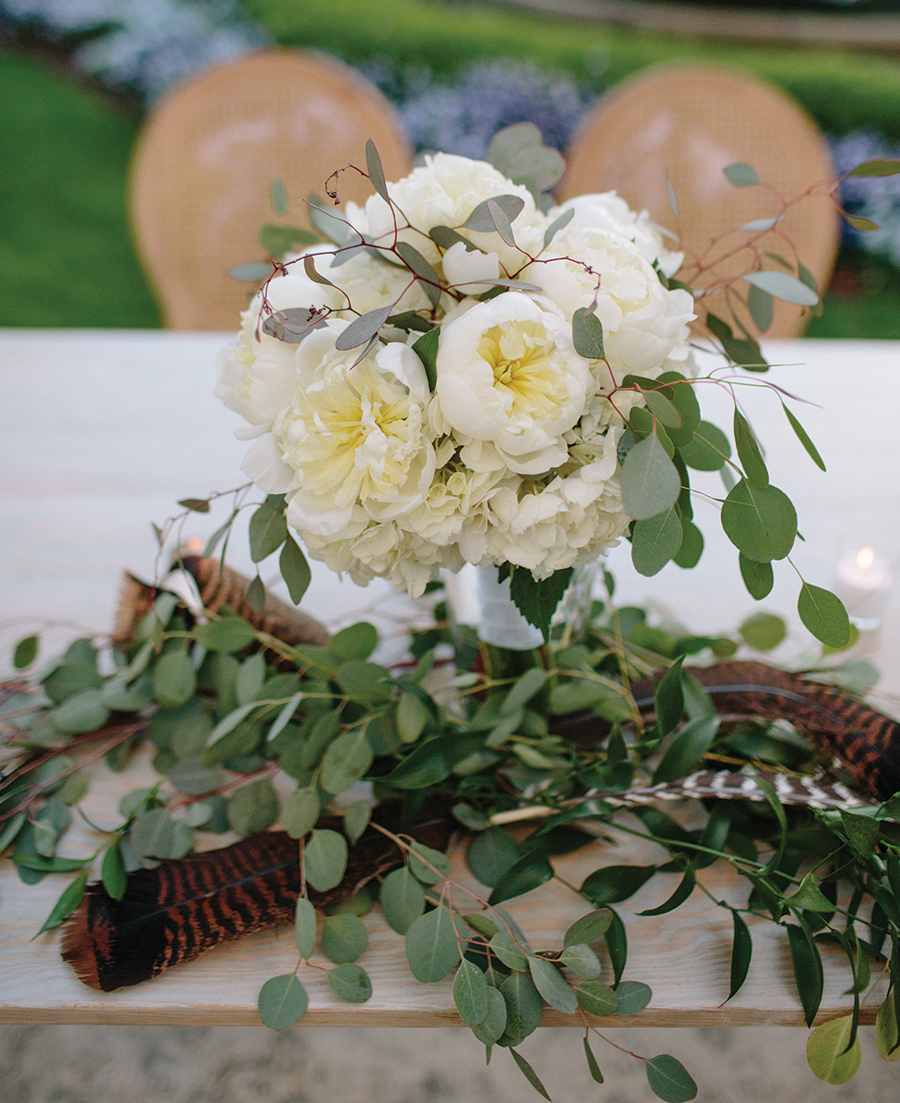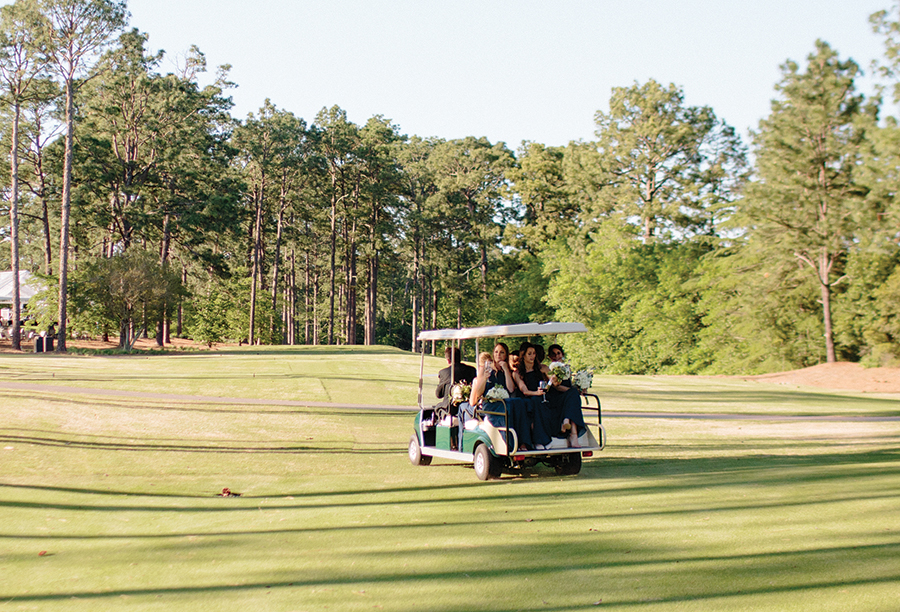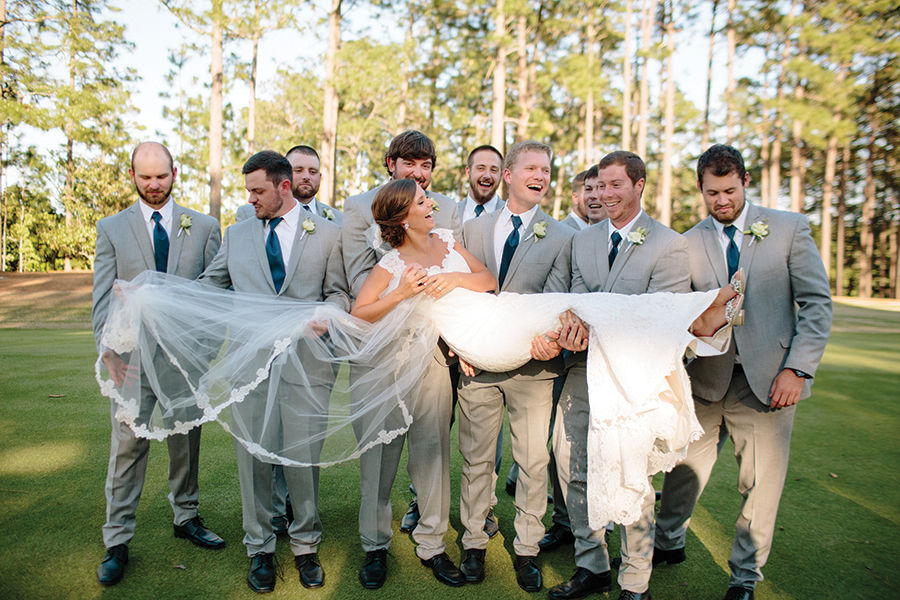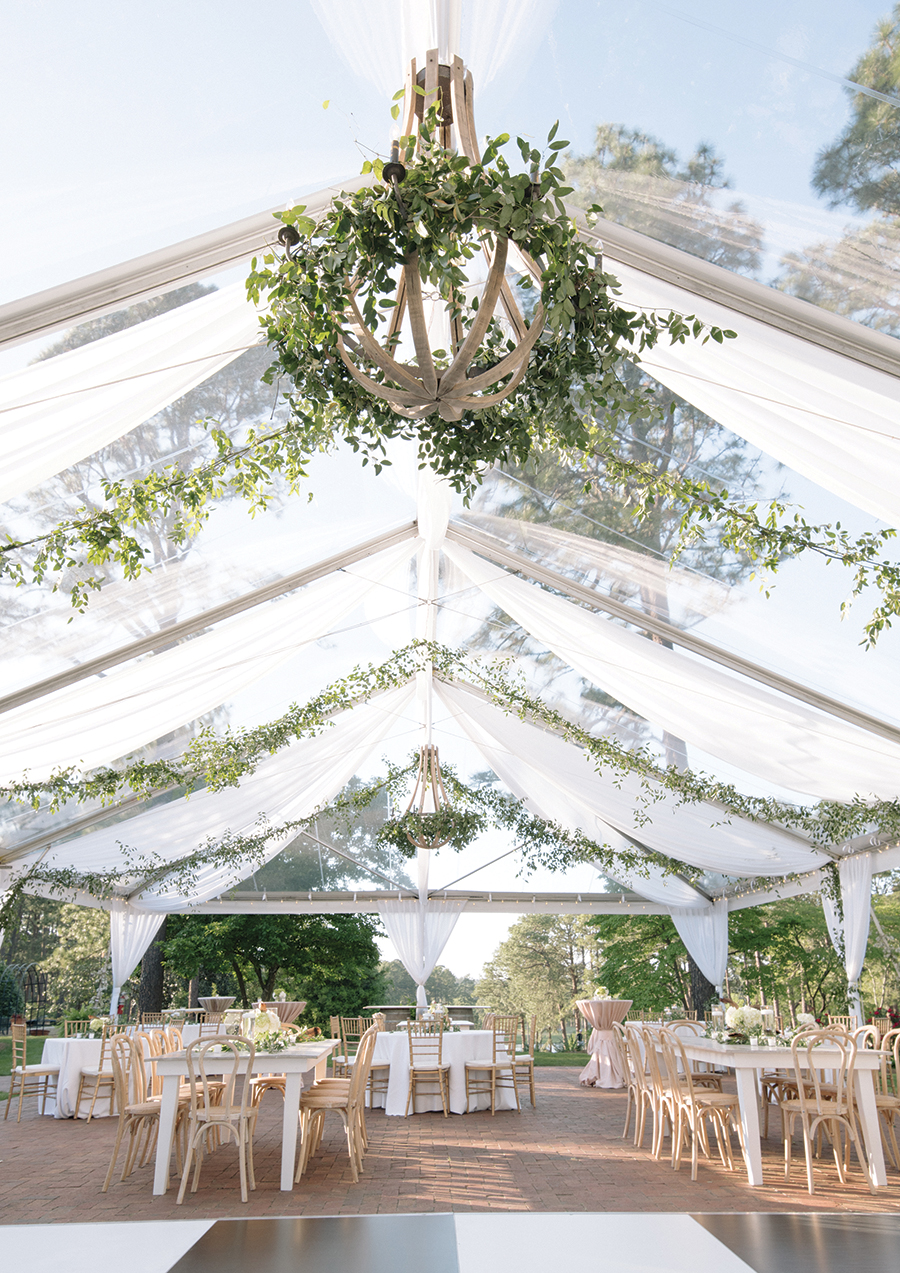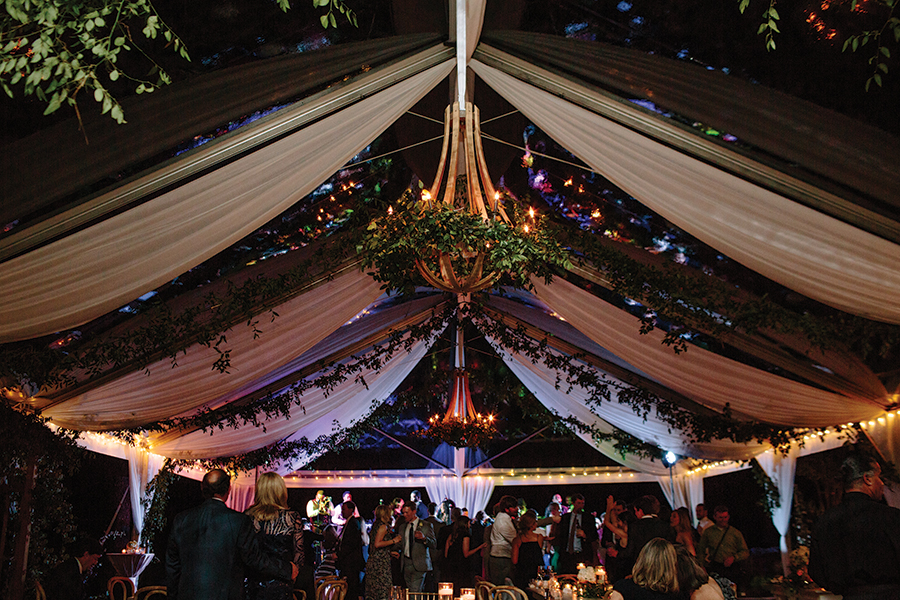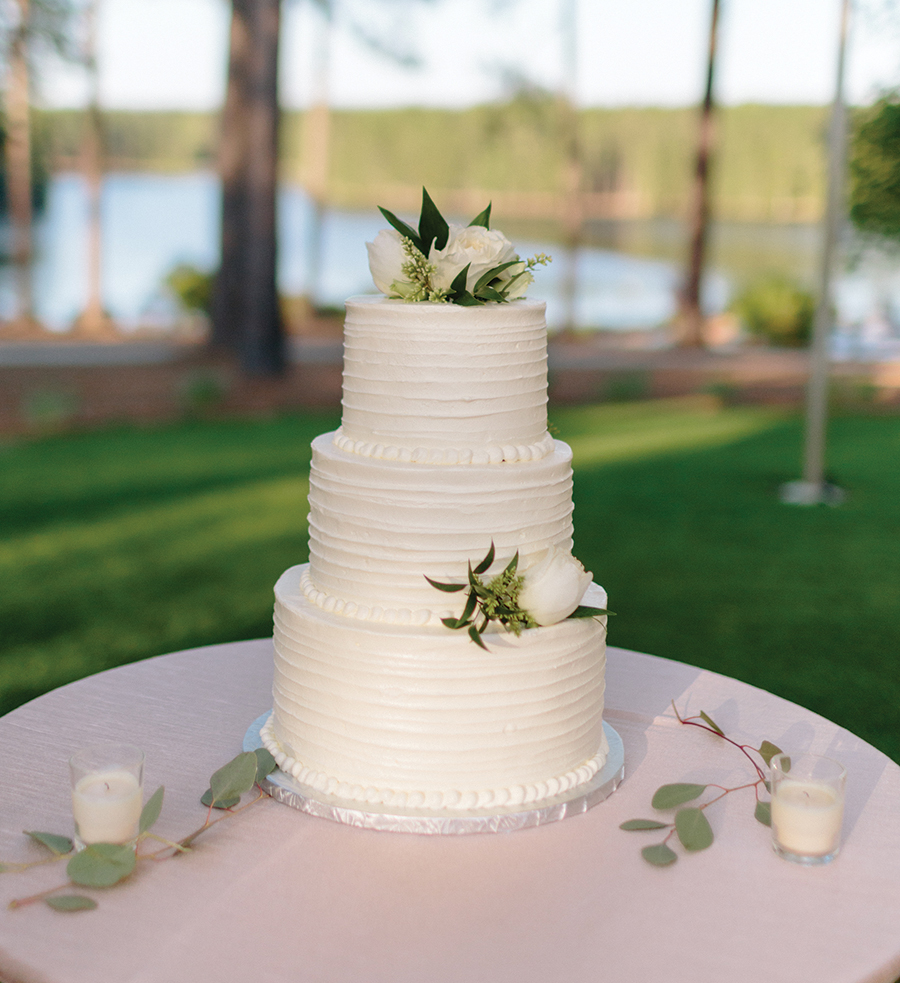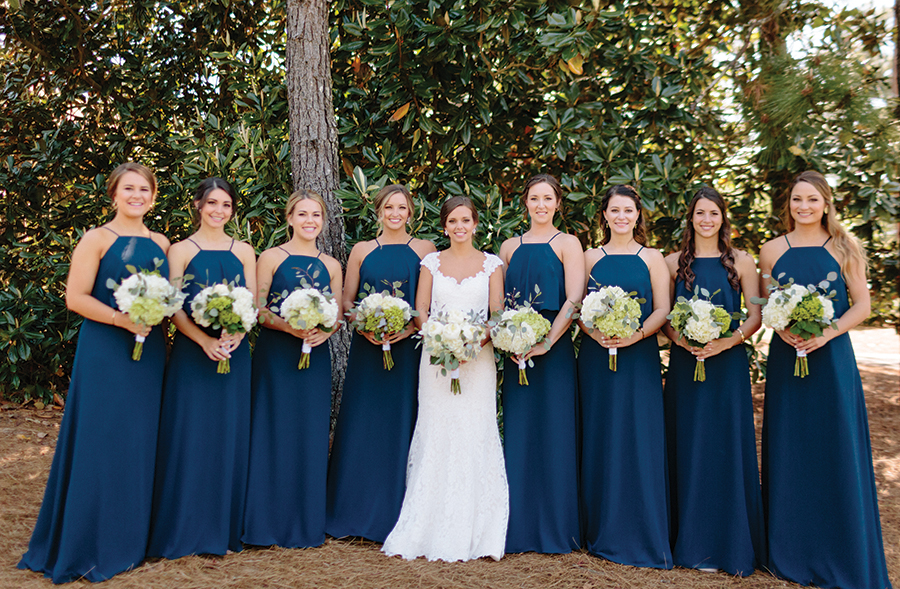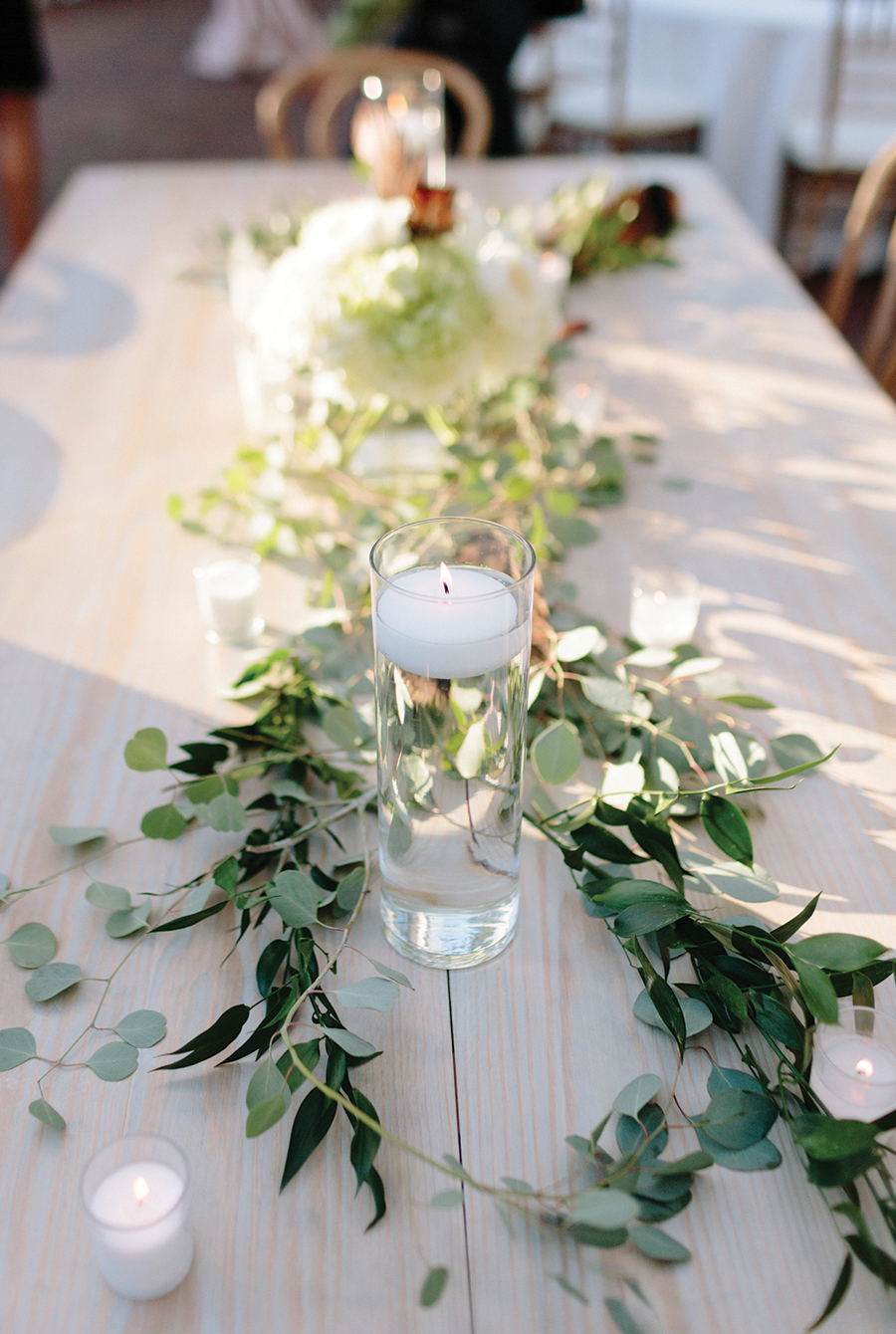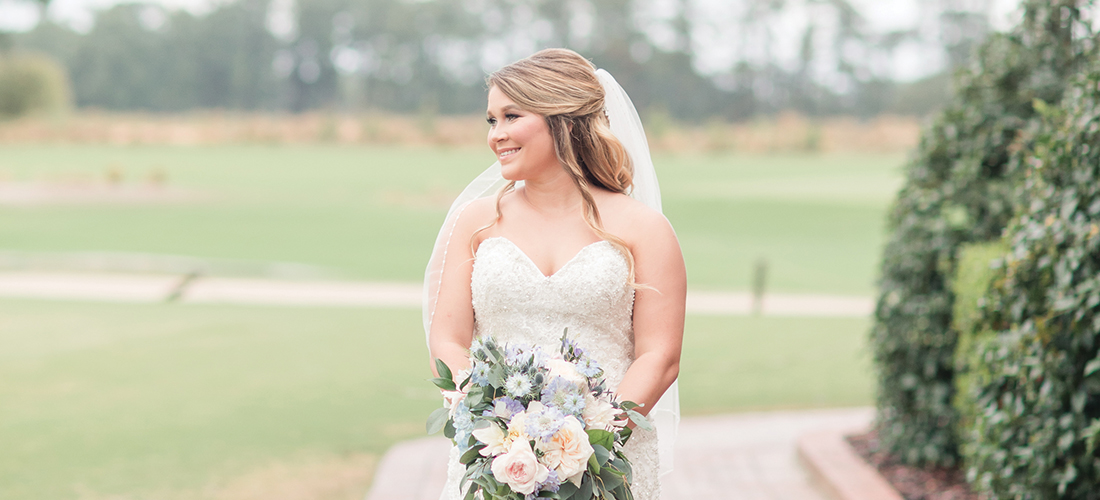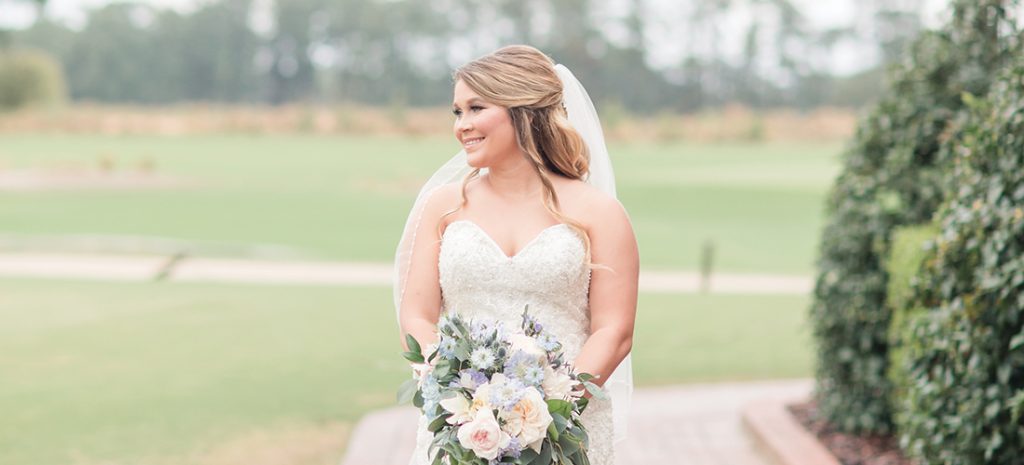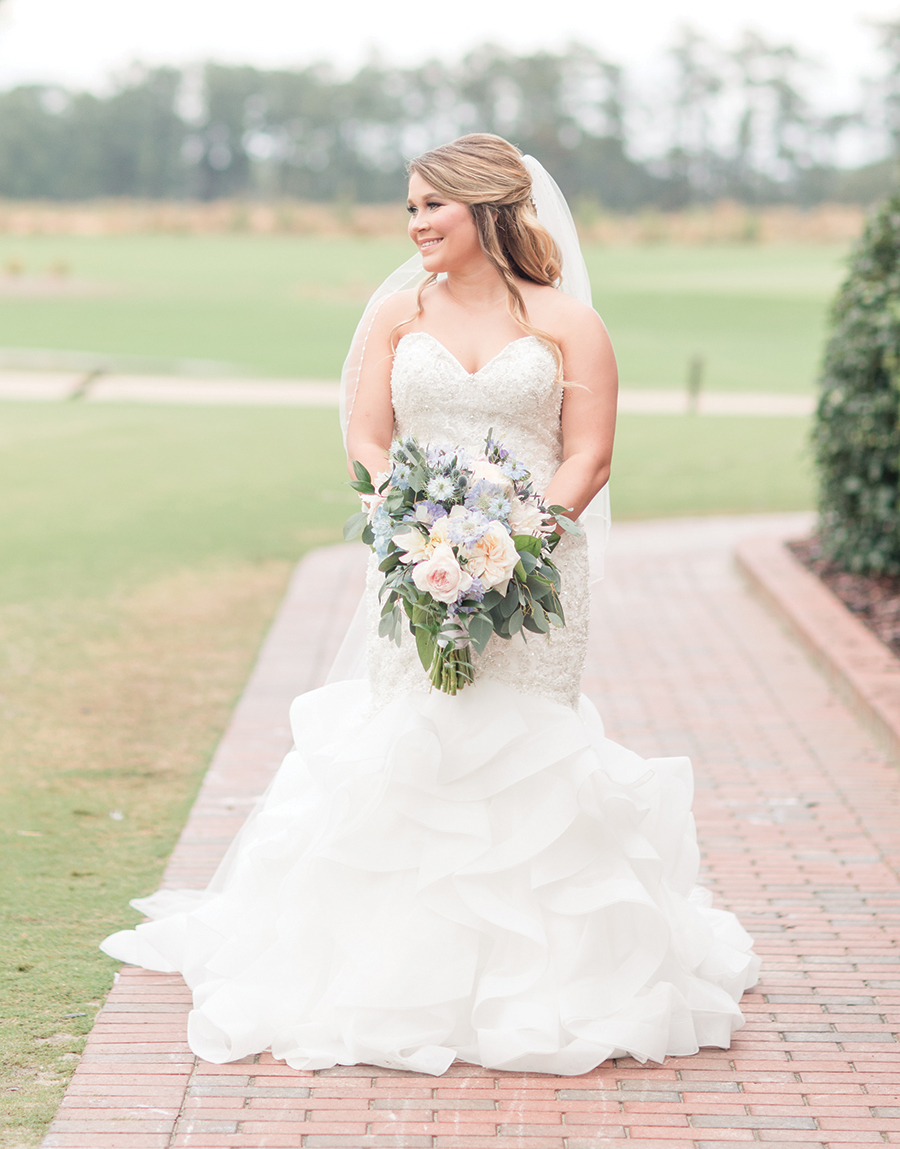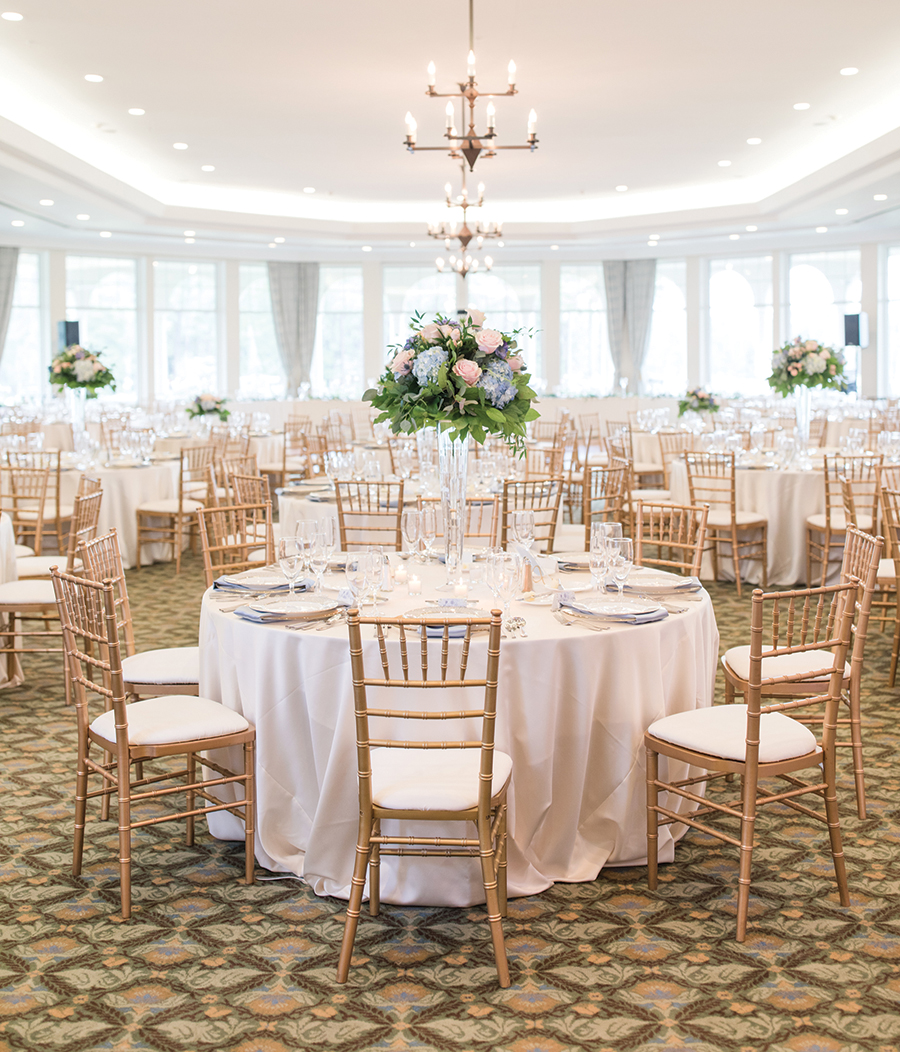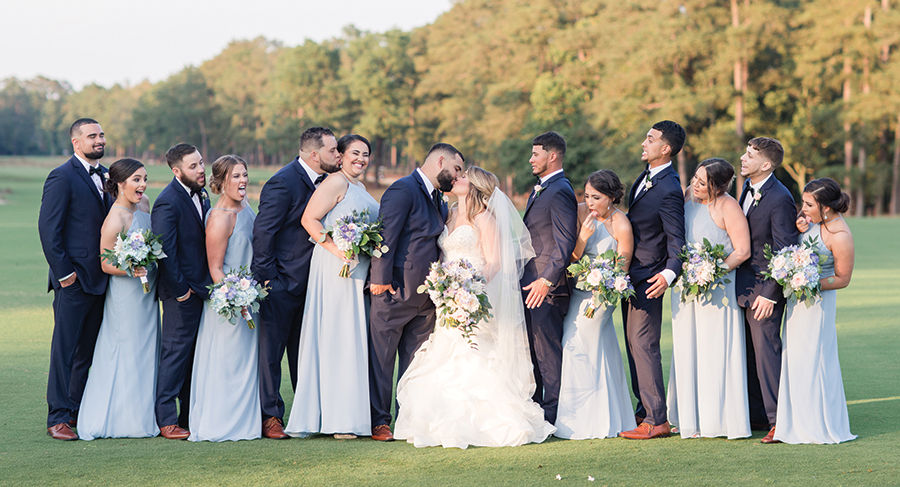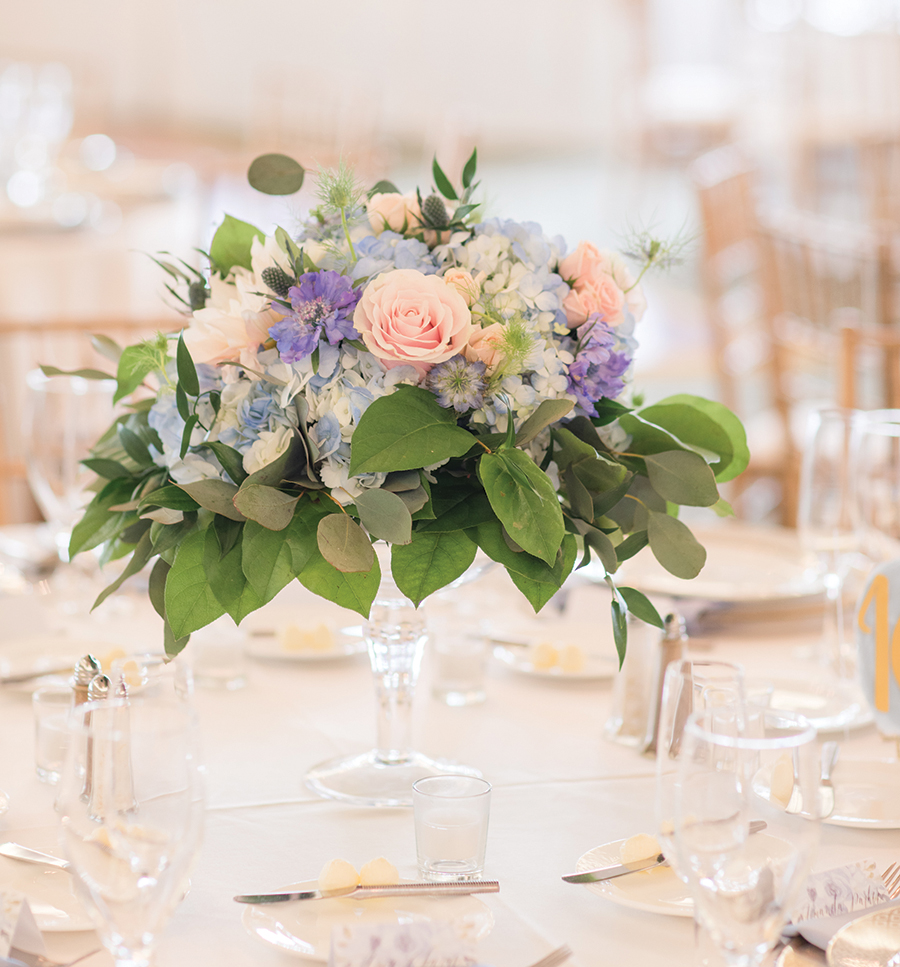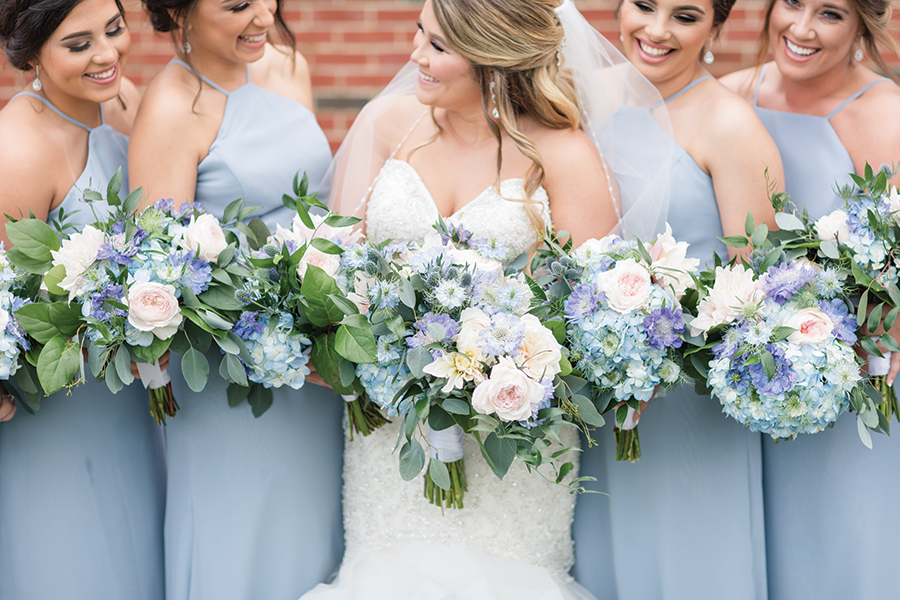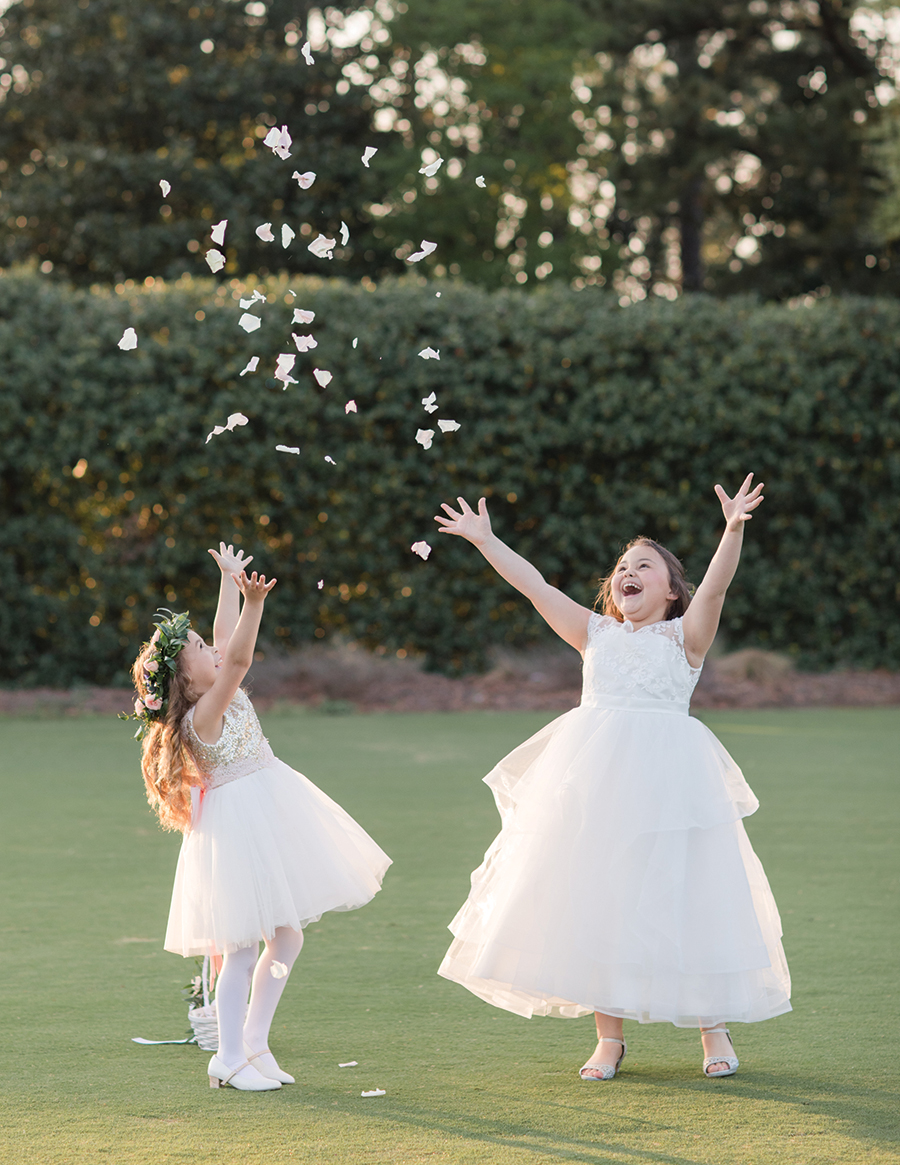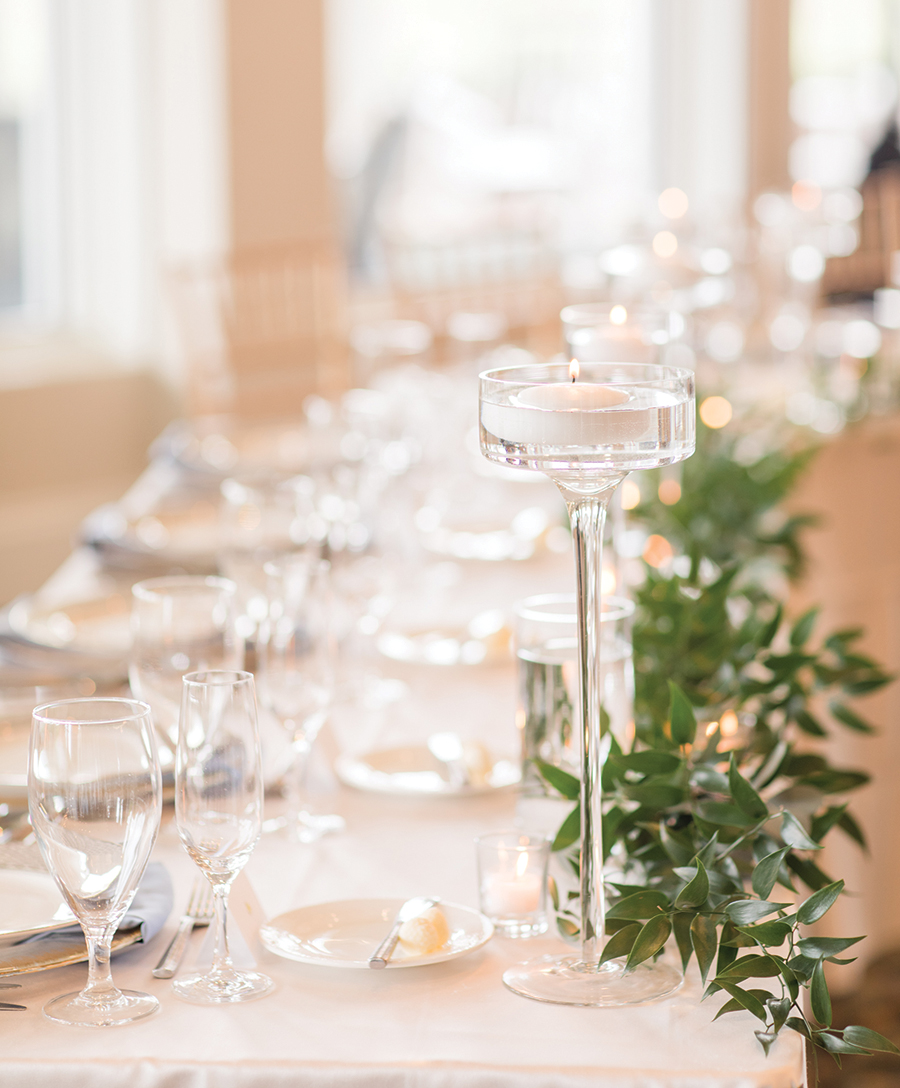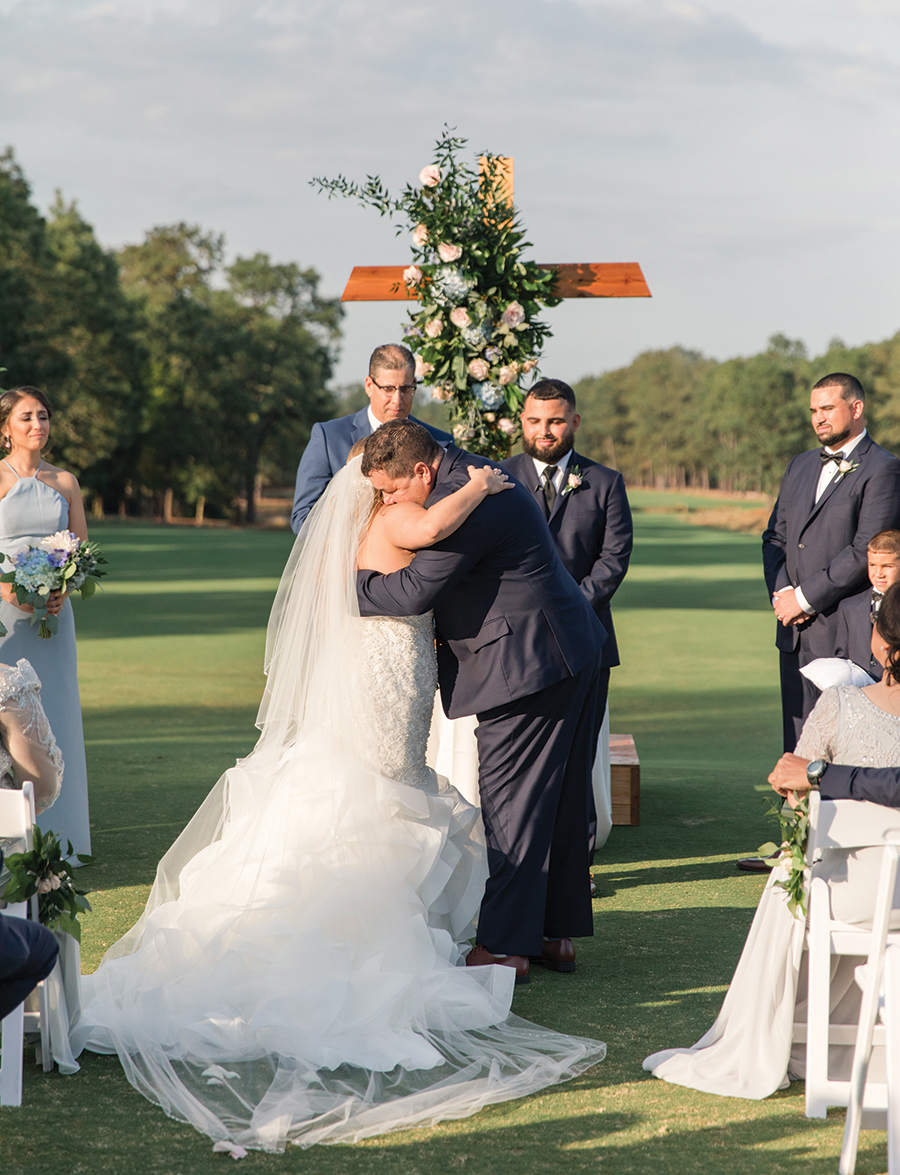Donna Andrews, the Sandhills’ only resident winner of a professional major championship, tees it up in the U.S. Senior Women’s Open
By Bill Case • Photographs by John Koob Gessner
A quarter century has gone by since Laura Davies and Donna Andrews battled head-to-head for a major championship title in the final round of the Nabisco Dinah Shore in Rancho Mirage, California. As the two came to the 18th tee that day, Davies, who was on the cusp of a juggernaut ’94 season in which she would win eight times on five different tours, appeared fully in command. She’d taken a one-stroke lead on the 17th and with only Mission Hills Country Club’s par-5 18th remaining, the Englishwoman — one of the most powerful drivers in the history of women’s golf — seemed in control.
Davies elected to play it safe, but the strategy began backfiring when her blocked 4-iron off the tee found the right rough. Her recovery stayed in the thick grass and her third failed to clear the crest of the green, leaving her 60 feet from the hole. Meanwhile, Andrews was on offense. She hit two perfect 3-woods followed by a 6-iron third that covered the pin the whole way, settling 12 feet behind the cup. Davies three-putted, opening the door for a two-shot swing.
“I told my caddie that there was no way I was going to leave a putt for my first major short,” recalls Andrews. She didn’t, drilling it in the heart. Andrews celebrated with a leap into Poppie’s Pond, becoming the first champion not named Amy Alcott (who took the dive in ’88 and again in ’91) to take the plunge. It has been an annual tradition followed by the championship’s winner ever since.
Twenty-five years later, Dame Laura Davies, a member of the World Golf Hall of Fame and owner of 85 worldwide victories, including four major championships, still plays competitively. She comes into the U.S. Women’s Senior Open at Pine Needles Lodge & Golf Club May 16-19 as the defending champion, having won the inaugural championship last year at Chicago Golf Club by a stunning 10 shots. Depending on how you want to score Harvie Ward’s U.S. Amateur titles and Peggy Kirk Bell’s Titleholders crown, Andrews stands alongside Julius Boros as one of the few major champions to call the Sandhills home. She, however, comes into the Senior Open championship with a slightly different schedule.
Andrews rises at 5:30 a.m. for her half-hour workout; feeds the horses at 6 a.m.; makes lunch for her two children, seventh grader Connor and third grader Sarah, and drives them to school at 7:15 a.m.; gives golf lessons at Pine Needles, where she is the lead teaching instructor, from 8:30 a.m. to 2:30 p.m., sometimes later; picks up the kids and heads home for farm chores and dinner with husband, James Tepatti. Oh, let’s not forget coaching the kids’ sports teams and selling houses for MLV Properties, a real estate agency where Tepatti is also an agent. Everyone needs to be somewhere. Some people seem to be everywhere.
Players like Davies and last year’s Senior Open runner-up Julie Inkster — who, at age 53, challenged the leaders in the U.S. Women’s Open on Pinehurst’s No. 2 course in 2014 — still regularly play tournament golf and are likely to have an upper hand over those, like Andrews, who don’t. After a stellar 15-year LPGA career that included six victories, highlighted by the ’94 Dinah Shore, Andrews retired from competitive golf in 2005. While she relishes her busy life, it leaves little time to get her own golf game in shape for a major competition, even one on her home course. “In the past, I might have had an edge reading putts but the contours of some greens were changed in the recent restoration,” says Andrews. “I’m still figuring them out.”
A native of Lynchburg, Virginia, Andrews came from a golfing family. Her father, Barclay Andrews, was a finalist in the 1961 Virginia Amateur, and both her brothers played the game at a high level. In Andrew’s mind, her involvement in other sports was critical in her development as a golfer. She played baseball, basketball, tennis and swam competitively. “Participating in other sports made me a better athlete,” she says. “I know it improved my hand-eye coordination which is essential for golf.” It’s a breadth of experience that she’d recommend to any young golfer who wants to compete at a high level.
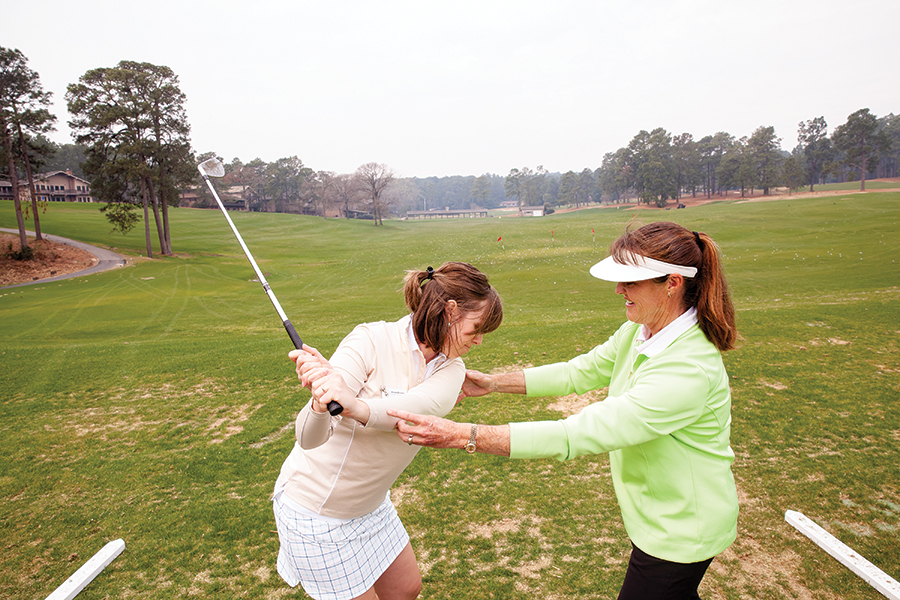
Andrew’s self-described “math brain” enabled her to focus on, understand, and practice good swing mechanics. “I got that from my dad,” she says of the former nuclear engineer who was so good at fixing things that “we never had a repairman in the house.” Donna developed an elegant swing with a relaxed and unrushed tempo. “Whenever I try to speed up, I get into trouble,” she says.
In high school, Andrews easily made the boys’ golf team, slotting in as E.C. Glass High’s number one or two player. Her teammates enjoyed needling opponents saying, “We got a girl who’s going to kick your butt.” She took home trophies for winning Virginia girls’ statewide championships in ’83 and ’84, and captured the 1984 North and South Junior Girls Championship in Pinehurst.
College coaches salivated over the prospect of recruiting Andrews. She chose the University of North Carolina (where she played alongside the current president of the PGA of America, Suzy Whaley) because she was interested in obtaining a “four year business degree from a great school — in case I needed a job.”
Andrews was second-team All-American her senior year, finishing third in the NCAA Championship. She continued winning Virginia Women’s Amateurs (five altogether), all held at match play over the Homestead’s Cascades course. Combined with her two junior titles, Andrews reeled off seven straight Virginia state championships from 1983 to 1989. Pinehurst was the site of the most prestigious victory of her amateur career when she defeated three-time U.S. Women’s Amateur champion Anne Quast Sander in the final of the 1988 Women’s North and South. By then, she had become familiar with Sandhills golf where she and her UNC teammates often came to practice. Andrews became friendly with Pinehurst’s Director of Golf, Don Padgett, Sr., and even worked at the resort in the summer.
Relying on a personal nest egg to finance her travels, Andrews turned professional in 1990 and played consistently enough to lead in the points race for rookie-of-the-year honors over Japan’s Hiromi Kobayashi with one event remaining. What happened next still rankles. “The final points event was a tournament held in Japan,” recalls Andrews. “The organizers invited Hiromi, but not me.” Kobayashi did just enough to nose ahead of Andrews to win the award.
In ’92, Andrews made a spirited run at the U.S. Open over treacherous Oakmont Country Club, leading early and ultimately finishing third. She would break into the winner’s circle the next year at the Ping-Cellular One LPGA Championship, finish ninth on the money list and tie with Helen Alfredsson for second in the U.S. Women’s Open at Crooked Stick in Carmel, Indiana, one shot behind winner Lauri Mertens. Golf Digest named Andrews the LPGA’s most improved player.
In ’94, Andrews won three tournaments and finished fifth in earnings, the highlight being the Dinah Shore — a victory that confirmed to the 26-year-old that she really “belonged.” Having climbed near the pinnacle of women’s professional golf, she possessed the wherewithal to pursue another passion, purchasing a horse farm just outside Southern Pines where she bred Hanoverians. She suffered the first in a string of physical setbacks when back pain led to surgery in ’96. Once she was pain-free, she won again the following year. A sixth victory in 1998 coupled with several other high finishes placed Donna third in the money race, and she was a member of the USA’s victorious Solheim Cup team with a 2-2-0 record.
Not long after she regained her form, injuries struck again. A fall from a horse in June 1999 caused a serious dislocation of her right shoulder and Andrews missed two months of competition. When she returned, she wasn’t the same player. She endured months of physical therapy before she could swing the club freely. Regaining some semblance of form in 2001, Andrews carded the lowest round of her career, a sizzling 62, in the second round of Tulsa’s Williams Championship, though it may well have been a shot lower. Her tap-in putt for 61 went in, but Andrews was concerned she might have struck the ball twice in the process. The television replay revealed no discernible evidence of a double-hit but, uncomfortable with the official’s ruling of no violation, she imposed the penalty on herself, and signed for a 62. She finished the tournament one shot behind the winner. Named to the LPGA Player Executive Committee, she served two years as president and, in another career offshoot, did periodic announcing gigs for ESPN at LPGA events.
Andrews reinjured her shoulder in 2004 after getting in the middle of a real, honest-to-God dogfight. She began referring to herself as “Donna Rehab.” Though she managed four top tens, another shoulder dislocation in ’05 sidelined the 38-year-old for good. It was then that Peggy Kirk Bell offered Andrews a full-time instructional position at Pine Needles. “God hit me over the head,” she says. “Here’s your way out.” Informed in part by her own work with renowned instructors Davis Love, Jr. and Jack Lumpkin, Andrews’ easy manner and uncomplicated, to-the-point instructional style resonated with her students. In the same breath, she made another major life change, marrying boyfriend Tepatti, a transplanted Alabaman and successful developer. The couple had their first child two years later.
The family atmosphere at Pine Needles, fostered by Warren and Peggy Kirk Bell, proved a natural fit. In her mind, the string of injuries left no lingering scars of what might have been. Things are as they were meant to be. “I feel I was brought to Pine Needles to continue the women’s golf tradition,” she asserts. “I love this family and this place.”
When the USGA announced in 2015 that it would be holding the first Senior Women’s Open in 2018, Executive Director Mike Davis acknowledged that the event was long overdue. “Let’s call it The ‘About Time’ Senior Women’s Open,” he said. In 2016, the LPGA informed its members that it would be holding its own senior women’s major in 2017 — the Senior LPGA Championship at French Lick, Indiana. The chance to play for two major titles was certainly welcome news for the women, but it truly became a dream come true when the purses were announced — $600,000 for the LPGA Championship and $1 million for the Open — dwarfing anything that existed before.
So there will be plenty more than pride to play for when the pros descend on Pine Needles. But don’t expect the women to be grim and stone-faced about it all. Most will relish the chance to reunite with the contemporaries of their tour days. That includes Andrews who cherishes her many friendships with fellow pros. It’ll be more than merely a social occasion for the Pine Needles teaching pro, too. With shoulders healed, Andrews hopes to improve on the finishes in her three prior senior majors — tying for 20th in the 2017 Senior LPGA Championship and missing cuts in that championship and the Senior Open last year.
Like so many of the players in the Women’s Senior Open, Andrews doesn’t lack for accolades. She’s been inducted into the Virginia Sports Hall of Fame, the Virginia Golf Hall of Fame, and the North Carolina Sports Hall of Fame. In June, Boonsboro Country Club, where she first learned golf, will host the Donna Andrews Invitational, a top-level amateur event for females.
Pine Needles has played host to three U.S. Women’s Opens in 1996, 2001, and 2007, and will host the championship again in 2022. The familiarity of the venue makes this a homecoming of sorts for several players. Stars who played in ’96 and are expected in this year’s Senior Open field include Inkster, Betsy King, Pat Bradley, Hollis Stacy, Beth Daniel, Patty Sheehan, Meg Mallon, JoAnne Carner, Jan Stephenson, and, of course, Davies. The championship promises to be especially fan-friendly. “We will only rope tees and greens,” says Matt Sawicki, the Director of Women’s and Senior Open Championships. ”It makes the event unique and allows an up-close and personal experience for spectators to walk the fairways with the legends of the game.”
Last year, the indomitable 79-year-old JoAnne Carner, winner of eight USGA championships, lit the tournament candle when she stepped on the first tee, flipped her cigarette on the ground and hit the first ball ever in a United States Women’s Senior Open Championship. It’s Pine Needles’ turn to grow the tradition with a little help from its teaching pro. PS
Pinehurst resident Bill Case is PineStraw’s history man. He can be reached at Bill.Case@thompsonhine.com.

